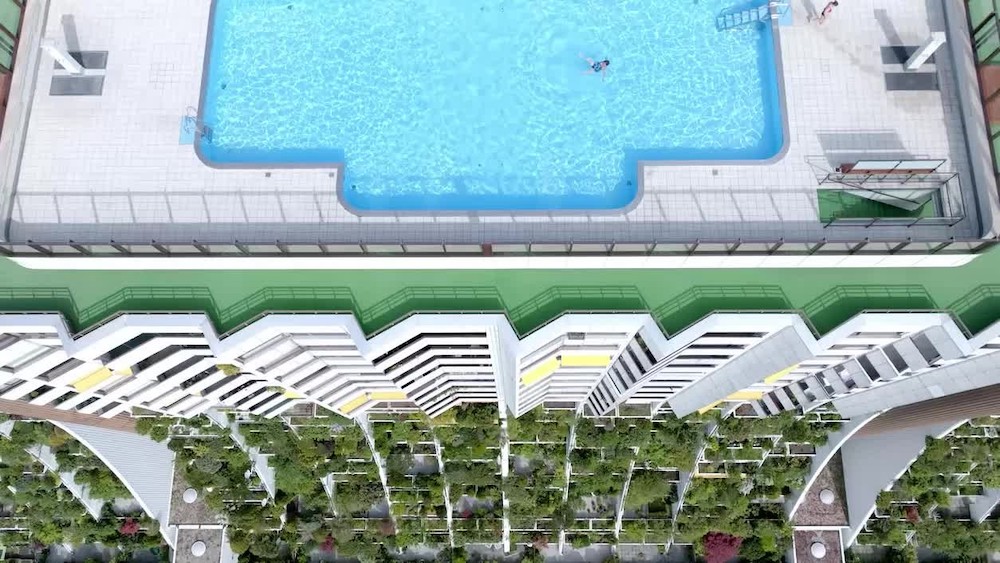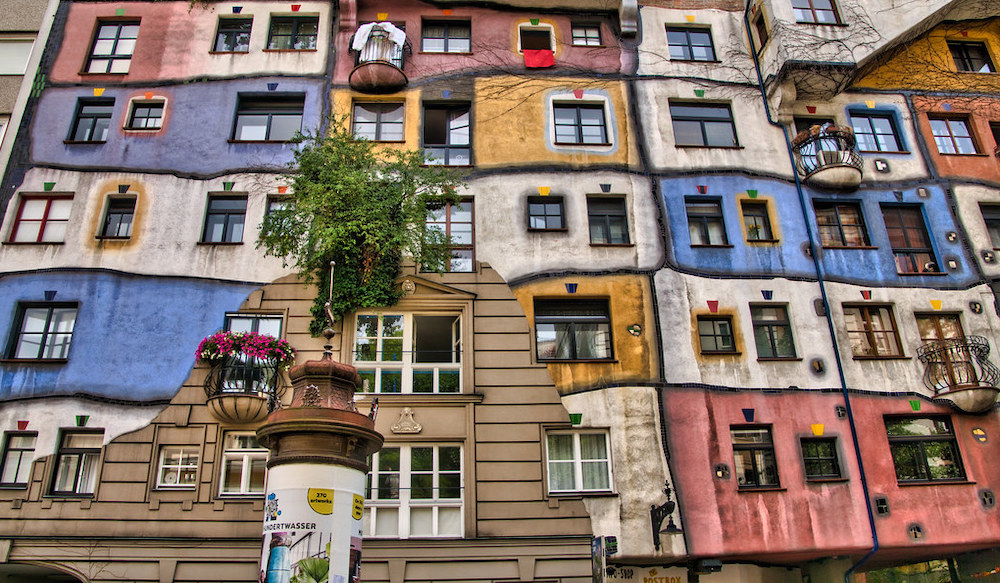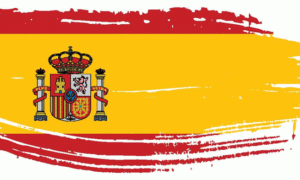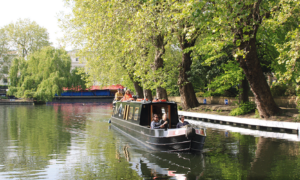(Editor’s note: For the second year in a row, the Economist Intelligence Unit recently named Vienna as No. 1 on its list of the world’s most livable cities. Vienna ranked No. 1 in 2022, 2019 and 2018.)
After reading a recent article in the New York Times, “Imagine a Renter’s Utopia: It Might Look Like Vienna” by Francesca Mari. I was struck by two things: How lucky I am to live in a city that still values and invests in social-housing, and how impossibly idyllic the article made Vienna sound.
While it is true that the city is leading many other cities in the world with it’s availability and investment in reduced-cost government housing, there are of course elements of sobering reality mixed in with the utopian-seeming view of Vienna from an international gaze.
Nearly 60 percent of residents in Vienna live in housing subsidized by the City of Vienna. In a city that is continually expanding (as can be attested by the ever-increasing number of construction cranes dotting the outer districts of the city), the city invests roughly 500 million euros per year in the up-keep and maintenance of old public residencies, which also includes new constructions around the city.

‘Karl-Marx-Hof‘ residential building
Started in 1920 with the first municipal housing complex, the Metzleinstaler Hof, the city’s socialist-leaning background has long supported the idea that everyone in the city has affordable housing. This commitment to affordable housing for the working-class couldn’t be clearer than the appropriately-named ‘Karl-Marx-Hof‘ residential building, built between 1927 and 1930 on former flood plains at the side of the Danube in the north of the city.
The building accommodates 5,000 residents, and includes space for doctors and business offices, kindergartens and parks. At 1,100 meters in length (and spanning the distance of four tram stops), it is still one of the longest residential buildings in the world. And with only 20 percent of the residential area dedicated to building, that leaves plenty of space for parks, open-space and courtyards.
Which brings us neatly to one of the elements of social-housing in Vienna that I find to be most important, and most inspiring: They are beautiful.
Whether they are examples of functionally Modernist austerity such as the Karl-Marx-Hof, the city-expanding Imperial style or the lacy and engaging energy of Art Nouveau buildings, city-housing in Vienna does not usually look like the concrete-block brutalist architecture present in many European housing complexes. They include plenty of outside space, parks and courtyards, which purposefully open and expand not only the architectural space but also the sense of shared community space.
I have often walked through the entrances to these complexes just to discover which treasures are hidden inside away from the street, whether it is art-deco sculptures atop fountains, or coolly shaded park benches under spreading linden trees.
One of the original aspirations of these social-minded building projects, social and economic equality, are represented by the diversity and beauty of the City of Vienna residences. The original hope when designing the program was that nobody could tell how much you earned simply by looking at your apartment building, and that a low-income earner would be equally able to live in a beautiful apartment surrounded by budding gardens as someone from a more privileged background.
This is still true today, and I clearly remember my first months living in Vienna going to visit new friends (many of whom were students or artists) and being shocked that young people who clearly were not rich could live in such amazing and beautiful places.

A quest for equality
An aspect of this quest for equality is also present in the locations of the municipal housing … they are not located outside of the richer parts of the city, or banished to the suburbs, but can be found anywhere in the city no matter the demographic of the neighbourhood around it.
I am lucky enough to live in one of the high-class parts of the city, the 18th and 19th Districts, which boast small tree-lined streets and individual large 3-story gardened houses (or more accurately mini villas). And yet directly around the corner from me is a large WienerWohnen (the municipal housing authority) complex that allows its residents access to green, quiet and safe neighbourhoods overlooking the rest of the city.
Residence does not always imply wealth in Vienna, which is for me one of the best aspects of living here. And yet, every success story has a more negative side, especially living in this current world which seems politically determined to turn its back on social policies and slip into bed with unfettered capitalism regardless of the consequences.
Vienna is not a utopia though…
It is true that Vienna is a fantastic place to live, and the remnants of renter-friendly rules have kept housing prices below other capital cities, for now. Unlike cities in the United States, where renting seems like a gouge that can only be fixed by an obsession with property ownership, or in the UK where it is simply unaffordable, renting in Vienna is the norm and in no way looked down upon.
However, in my 10 years living here, the cost of renting privately has increased about 15-20 percent on average. Only between 2021 and 2022, rental prices rose by 7 percent, despite rules in place to limit rental prices in times of inflation.
In Vienna, 43 percent of housing is insulated from market fluctuations and greedy landlords by strict laws. However, this also means that 57 percent is not.
The city is also beginning to suffer from the housing crisis present in the rest of western Europe. Although it is still possible to find an apartment, it takes much longer than it used to, and finding a rental in your preferred district is becoming harder and harder to guarantee.
As with many European capitals, it is also becoming harder to find rentals as the property is being bought up by rich oligarchs from Russia and China, and royalty from the Arab states.
An estimated 30,000-to-50,000 units in Vienna are empty and being saved as an investment, dramatically reducing what is available for the rest of us.
This also includes the WienerWohnen affordable housing. One of the original highlights of the City of Vienna housing was that once you got an apartment, you never had to give it up, regardless of your future income or the needs of others in the city.
The average income of residents in Vienna is 57,000 euros per year, and anyone who makes less than 70,000 euros can apply for municipal housing. Because of this, many wealthier residents who can afford a private apartment hold onto the public-housing from their youth or from their families (many people gain a city apartment after the death of a parent or grandparent), which means that tens of thousands of apartments in city-housing remain empty or passed around between family members despite their owners being able to afford private rentals.

Do migrants and refugees fit into the system?
In an era when there are more and more people arriving in Europe, mostly as refugees or economic migrants, a shortage of housing because the subsidized apartments are held onto by the elderly, Austrian rich seems like a contrast to the original spirit of the project. Surprisingly, Austria has a higher percentage of foreign-born residents than New York City, and it is many of these residents who have a lower access to cheap accommodation.
Having done an informal survey with friends across Vienna, I have spoken with a few people who were lucky enough to receive a subsidized apartment 2-to-3 years after their application was accepted. But mostly, it seems to take about 6-to-10 years to move into city housing once your application is approved. A wonderful system with a noble purpose, but difficult for newly-arrived residents with little to their name who need somewhere to live now.
So, as with everything, the housing system in Vienna has it’s light and dark sides. The beautiful, green housing that is offered from a century-old dream is still an element of Viennese life that the city can be extremely proud of. The dream of equality in the 1920’s is still aspired to, if not completely upheld by politics 100 years later.
We can only wait to see if this “utopia” remains robust in the facing of our changing and challenging future, or if Vienna will hold true to its early, admirable principals.
––––––––––
Read more about Vienna here in Dispatches’ archives.
Thom Harding was born and raised in the UK and USA, sharing his time between Bath and Boston. Upon completing his studies in Art History and Painting in Florence, Thom travelled around Mexico and India before moving to New Mexico to start his career as a Primary school teacher.
After completing his MA in Education, he now lives and works in Vienna, Austria and enjoys spending his free time hiking, reading, travelling and exploring around Europe.
See more of Thom’s work here in the Dispatches archive.
You can read more about Vienna here in the Dispatches archives.















